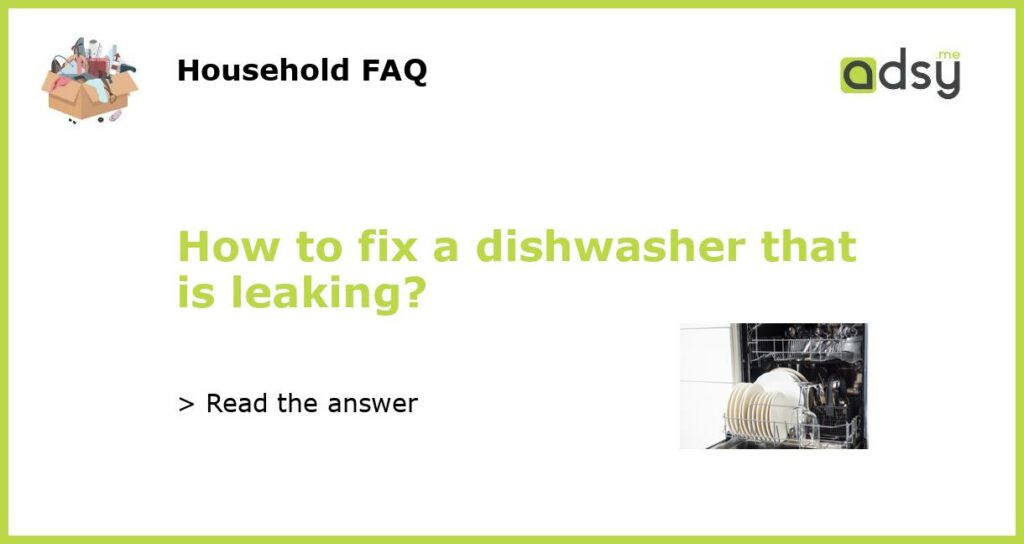Causes of a Leaking Dishwasher
A leaking dishwasher can be a frustrating problem to deal with. Not only does it create a mess in your kitchen, but it can also damage your floors and cabinets if not resolved quickly. Understanding the causes of a leaking dishwasher is the first step in fixing the issue. Here are some common reasons why your dishwasher may be leaking:
- Loose or damaged door seal
- Clogged drain hose
- Leaking water inlet valve
- Damaged or worn out tub gasket
- Excessive detergent usage
If you have identified the cause of the leak, you can proceed with the appropriate solution below.
Tightening or Replacing the Door Seal
The door seal, or gasket, prevents water from leaking out of the dishwasher during a wash cycle. If the seal is loose or damaged, it can cause water to leak from the door. In some cases, the seal may simply need to be tightened. Use a screwdriver to tighten any loose screws or bolts holding the seal in place. If the seal is damaged or worn out, you will need to replace it. Purchase a new door seal from a reputable appliance parts store or the manufacturer’s website. Follow the manufacturer’s instructions for removing the old seal and installing the new one.
Clearing a Clogged Drain Hose
A clogged drain hose can cause water to back up in the dishwasher and leak out onto the floor. To fix this issue, you will need to locate the drain hose. It is usually located at the back of the dishwasher and connected to the sink drain or garbage disposal. Disconnect the hose and check for any clogs or debris. Use a wire hanger or pipe cleaner to remove any blockages. Once the hose is clear, reattach it securely. Run a test cycle to ensure that the leak has been resolved.
Replacing a Leaking Water Inlet Valve
The water inlet valve controls the flow of water into the dishwasher. If it is leaking, it may need to be replaced. Before replacing the valve, make sure to turn off the power to the dishwasher and shut off the water supply. Locate the valve, which is usually at the bottom or back of the dishwasher. Remove the screws or bolts holding the valve in place. Disconnect the electrical wires and water supply hose from the valve. Install the new valve and reconnect the wires and hose. Turn on the water supply and power, and run a test cycle to check for leaks.
Fixing a Damaged or Worn Out Tub Gasket
The tub gasket, also known as the door gasket, creates a watertight seal around the dishwasher tub. If it is damaged or worn out, it can cause water to leak from the sides or bottom of the dishwasher. To fix this issue, you will need to remove the old gasket and install a new one. Start by opening the dishwasher door and locating the gasket. Carefully remove the old gasket by pulling it out of its groove. Clean the groove with a mild detergent and water solution. Wet the new gasket and press it firmly into the groove. Close the dishwasher door and run a test cycle to check for leaks.
Using the Correct Amount of Detergent
Using too much detergent can cause excessive sudsing, which can lead to a leaking dishwasher. Always follow the manufacturer’s recommendations for detergent usage. Avoid using regular dish soap as it can create excessive suds. Use dishwasher-specific detergent and measure the correct amount for each wash cycle. If you notice suds during a cycle, add a tablespoon of cooking oil to break up the suds. Run a rinse cycle with no dishes to remove any remaining suds. This should help prevent future leaks caused by excessive detergent usage.






